Duck Dive: USC Trojans Football 2025 Preview
Special thanks to Alicia de Artola Castillo of Reign of Troy for joining me to discuss USC’s roster on this week’s podcast:
:no_upscale()/cdn.vox-cdn.com/uploads/chorus_asset/file/26052086/USC_offense.png)
On the basis of fundamental per-play performance, USC had a very strong offense in 2024 with top marks in explosive play prowess in both rushing and passing and one of the most efficient run games in the league (and one of the few which actually runs the ball well, contrary to the conference’s identity). While I’m at a loss to explain all of the factors that caused such a talented and effective team to constantly lose games they should have won — my post-game predictive model had the Trojans at 10-2 in the regular season in second-order wins, with every one of the “wrong” outcomes going the opponent’s way — I believe most of them are straightforward to understand and come down to two interrelated factors having to do with the quarterback in Coach Riley’s unique power RPO system.
At the end of the 2023 season, reigning Heisman winner Caleb Williams sat out the bowl game for NFL preparation, and the only scholarship QBs on the roster were 5-star true freshman Malachi Nelson whom Riley had brought on to be the heir apparent, and mid 4-star redshirt sophomore Miller Moss who was a pocket passer and lifelong Trojan fan recruited by the previous staff. Moss had a nice performance in the bowl game lighting up the Louisville defense, though certain film reviewers were apt to caution this looked more like a crummy defense unable to keep up with super talented receivers and balls didn’t have to be very accurate to connect. Nelson transferred to Boise State during the subsequent offseason (he didn’t there either and is now at UTEP … looking like a bust) while Riley brought in #14 QB Maiava, a mid 3-star from the 2022 cycle who’d successfully run Brennan Marion’s Go-Go offense at UNLV.
Maiava was athletically a better fit for the needs of Riley’s offense, but the schemes are sufficiently different — plus it was clear from watching the UNLV tape that the young QB could use some developmental time to mature out of some processing mistakes — that playing him right away didn’t seem like a good idea in 2024 to Alicia or I when we spoke last Summer. Moss started for most of the year, and while he wasn’t making cavalier mistakes, he wasn’t doing enough to win games either – his passer rating was a bit below average, and he lacked the ability or willingness to keep the ball on the RPO which, especially in the redzone, cost the Trojans multiple touchdowns.
During the week 11 bye in between a loss to Washington and playing Nebraska, Riley pulled Moss and put in Maiava, which probably constituted starting him four games ahead of schedule. It was immediately clear what the athletic differences were between the two QBs, with Maiava punching in the RPO touchdowns that Moss had refused to (and in my opinion had finally cost him his job) but also a more cavalier and unrefined approach to his throwing motion – bigger windup, open hips, off-balance feet. Here are the comparative passing numbers:
:no_upscale()/cdn.vox-cdn.com/uploads/chorus_asset/file/26052083/USC_QBs.png)
The results were overall worse passing performance, much more of an interception risk (some crazy luck turned a couple should-have-been picks into big receptions; Maiava’s passer rating probably should be significantly lower than it is if Nebraska’s DBs had remembered to wear gloves or Texas A&M wasn’t trying to give the bowl away in the second half), but more wins as Riley’s offense is ultimately a pretty strong one if he just has a QB who remembers to run when the RPO read says run.
QB athleticism played into the second main factor that held USC’s offense back, though it’s been an ongoing issue with USC which Alicia and I have been discussing for years: the completely irrational playcalling differential between how effective and how frequently they run vs they pass the ball. Last season was the worst yet, the Trojans were +8.78 percentage points better at rushing and yet they called pass 61.9% of the time, which is borderline insanity. During the UW game which prompted the QB switch, 30 of the 39 playcalls in the first half were passes, against a defense with its own massive differential of -11.73 points against the run.
This ineffectiveness is mostly detectible during the Williams to Moss/Maiava transition in 2nd down effectiveness, which rises 16 points in short yardage rushing but falls the same amount in short yardage passing then collapses nine points in medium and long yardage situations. That sets up overall worse 3rd down situations and makes what was an already mediocre behind-the-chains offense in 2022-23 (45%, buoyed by Williams scrambles) into an outright bad one in 2024 (36% in anything besides 3rd & short). As we discussed on the podcast, it’s difficult to predict whether USC will break through its issues and win the games it’s supposed to because it’s so hard to tell whether Riley’s irrational decision-making is transient or not.
In 2025, Moss has transferred out while Maiava remains. They’ve taken two additions: high 4-star true freshman #4 QB H. Longstreet, and transfer #7 QB Huard who started out at UW, played a year at Cal Poly, and spent the last year on Utah’s bench. Alicia repeatedly dashed my hopes that Huard might start, so this will likely just be a race between Maiava and Longstreet to show who’s more ready, possibly an ongoing one about who’s ahead on any given week. Alicia’s report is that Longstreet is probably a better long-term fit for Riley, but needs some polish coming out of high school and isn’t a day-one starter. I suspect that Maiava will have the job at the beginning of the season, and it’s simply a matter of how long he can keep the lead on Longstreet. He has a head start with age and experience in the system, and presumably he’s not standing still but developing as well, but his throwing motion and processing were enough of a mess that I could see a path for Longstreet to beat him out before the end of the year if the freshman gets the inside track and the redshirt junior is off-pace – we’ve seen it happen for a Riley QB before. Of course, we’ve also seen a Riley QB wind up in El Paso.
Each year he’s been at USC, Riley has taken transfer running backs into a crowded room and leaned on a single featured back with the lion’s share of the carries, and he’s nailed he evaluation every time with excellent per-carry success rates and averages for that back each year. In 2024 that was Mississippi State transfer Woody Marks, who had 57.8% efficiency, 5.5 adjusted YPC and 6.1 adjusted YPT, all great numbers. The second back, with only about a quarter of the carries as Marks outside of garbage time, was then-redshirt freshman Quinten Joyner who came in with even better numbers at 64.7%, 7.2 YPC and 6.2 YPA. Joyner’s per-play production was absolutely elite, some of the best I’ve seen all year, and it was across a large enough sample across a broad range of defenses that I’m sure they’re legitimate, though he had the benefit of being a lot fresher and I suspect they’d come down a bit if his utilization went up.
Marks was drafted in the 4th round by the Texans. Joyner surprised me by transferring out; Alicia intimated that he had a high NIL asking price that Texas Tech was willing to pay and USC wasn’t. The other transfer out was fellow 2023 recruit A’Marion Peterson, who was sporadically used and without great production, and the only returner is true sophomore #21 RB B. Jackson whose usage and build Alicia and I agreed limit him to a short-yardage specialist.
So effectively, USC has let a sure thing in Joyner go in exchange for four additions: New Mexico transfer #1 RB E. Sanders, Juco #2 RB W. Jordan, and borderline 4-star preps #27 RB Wormley who enrolled early and Harry Dalton who arrives in the Fall. Sanders and Jordan were both very productive at their previous schools, though I haven’t had the chance to chart them – the former rushed for over a thousand yards on over 7.2 YPC in raw stats last year at UNM, and the latter went for over 1,600 yards at 7.4 YPC at Hutchinson CC and won the Walter Jones Trophy.
I think the most likely scenario is that Sanders becomes the next featured back, runs very productively, then goes to the NFL next April, while Jordan gets a fraction of the carries also at pretty good numbers, then next year Riley takes another transfer to be the featured back and this cycle starts all over again. Alicia told me that there’s some unexpected drama because Jordan’s been making so much noise in practices that it could flip around and he becomes the primary back, and because he’s younger Jordan could stick around for two seasons as the top back in LA. That’s never happened before, but there’s a first time for everything. On the other side of the possibility range, Sanders or Jordan might not translate his productivity to the Power conference level — prior experience tells me the Juco has the highest odds of this, followed by the G5 transfer, with both being the least likely — in which case they’d need to turn to one of the true freshmen to get at least a substantial chunk of the rushing production.
Since Riley’s track record is so good on this question and the one consistently excellent thing about his offenses at both schools is efficient and explosive rushing — despite offensive lines and quarterbacks in an RPO system that would sometimes indicate the contrary — I’d have to rate the odds of the running back room working out just fine as very high, no matter how thin these margins appear and how easy it is to imagine this going wrong. In similar personnel circumstances I wouldn’t give any other team the benefit of the doubt, nor would I extend Riley that credit for any other unit, but this is the exception.
Last year the Trojans used three tight ends in different roles. For the third straight year since he was a redshirt freshman in 2022, the primary tight end was #87 TE McRee, who returns for his final year in 2025. As expected since the other guys around him from a large but fitfully developed room had left or were unavailable with injury, the oldest remaining available guy joined him as the designated blocking role, redshirt freshman Kade Eldridge, but this was limited to some special purpose reps and Eldridge wound up transferring out at the end of the year. Three new 4-star preps had joined last year, but two of them, #23 TE Matthews and #18 TE Olsen, didn’t play while the most talented of them, #85 TE W. Lyons got a smattering of reps throughout the season doing a little bit of everything.
While McRee had improved his pass catching numbers and blocking grades to his best year yet in 2024, he still graded out as a below-average tight end on my tally sheet in his third season as starter – underwater in blocking and receiving success rates and producing just 6.1 adjusted YPT. I speculated on the podcast that with Lyons coming online in 2025 that their roles will switch, with McRee coming in just to block as needed and Lyons becoming the new receiving option, and Alicia said she thought that was right.
As Alicia loves little more in this world than a wide open tight end on a seam route catching touchdowns, the Trojans haven’t done much to gratify lately — the position is the longest NFL draft drought for the team by a wide margin — the last USC TE taken was Randall Telfer over a decade ago — and schematically it’s just not how Riley (or his playcalling predecessor Graham Harrell, or really any of the post-Carroll knuckleheads even if they wanted to) uses them. Riley’s triple-option RPO calls for a speedy tight end to bluff block then sprint to the sideline parallel to the line of scrimmage – if the QB has kept the ball on the first read and is on to the next, either the safety maintains inside leverage and the QB tosses it to the TE who can wheel it up the sideline for an efficiency play, or the safety goes out to cover the TE and leaves the QB run lane open up the middle for an explosive (assuming the QB is willing and able to do that … if he’s not, then he gets benched, which in my opinion is what happened to Moss after that fateful UW loss).
Either way, the TE is required to be speedy to make it work — credibly pull the safety off or get a useful gain on a very long wheel — but isn’t going to post huge numbers. So I think Lyons, since he looks simply faster than McRee, is a good candidate to be a more useful tight end to Riley for this system, but at the same time I doubt Alicia will get her wish for many more wide open tight end touchdowns downfield.
We did discuss the coaching changes pertinent to this position at some length. The former offensive line coach has upgraded programs, and USC has moved last year’s tight ends coach over to take his spot. Alicia told me the now-OL coach Hanson was at one point Tulsa’s OL coach and when Riley originally hired him the thought was he’d be a co-OL coach, but instead wound up with the TEs and gradually improved McRee’s blocking grades, which has inspired some optimism that he’ll do the same for the linemen (I find this logic slightly dubious; I’ve been charting McRee for three years). Also, while retaining WR coach Simmons for the outside wide receivers, USC has hired Colorado State’s WR coach Savage for the inside wide receivers and given him the TE remit. Alicia was encouraged by the uptick in recruiting aggression that Savage has demonstrated as well as the potential implication that tight ends might be treated more like receivers. We discussed the possibility that Lyons, even though it’s somewhat outside of Riley’s scheme on the whiteboard, might be used as either of the young quarterbacks’ best friend and just act as a tall, easy target for dumpoff lobs the way a certain now-transferred wideout served last year for Maiava.
The wide receivers used quite a large and even rotation last year, although there were significant variations in the metrics for individual per-target effectiveness. Six wideouts got between 10 and 20% of the meaningful targets over the course of the year without much difference week-to-week (max variance .014 due to an injury, excluding the bowl game when three receivers had transferred out). Here’s a chart mapping their distribution:
:no_upscale()/cdn.vox-cdn.com/uploads/chorus_asset/file/26052080/USC_WRs.png)
The three who were very effective were the 6’4” outside receiver #8 WR Lane at 62.7% success and 8.4 YPT, the 5’11” inside receiver #6 WR Lemon at 58% and 10.1 YPT, and the veteran Kyle Ford who’d tripped to UCLA and back to USC and put up the best overall numbers on 69.7% and 9.2 YPT, though at only 10% of the meaningful targets Ford’s frequency was upside down and another point of offensive irrationality that limited the team. Ford has graduated after a long career (sadly I think multiple knee injuries kept NFL interest to a Raiders minicamp invite) but Alicia told me that USC opened the bag to keep Lane and Lemon, which looks like an appropriate use of the warchest given their production and the necessary roles they play in Riley’s scheme.
Conversely, Alicia said that USC didn’t do much to keep Zachariah Branch or Kyron Hudson from transferring, which given their per-target numbers also seemed appropriate to me – 43% and 54% success rates with 6.8 and 7.3 YPT respectively, mediocre-to-poor numbers. Duce Robinson is an interesting edge case, I think – he came in at exactly 50% success rate but 9.3 YPT, indicating big plays when he caught it but unreliable hands. I think you can work on improving hands and his height at 6’6” provided some unique matchup advantages especially as a Y-receiver, so letting him transfer out is potentially a big waste, but as of this point it was mostly just that – potential.
For 2025, Lane and Lemon have jobs, and we know that they’ll want to put more than two receivers on the field so we need to identify at least one more. Alicia said there was some rumbling from within the wide receiver unit itself last year that the six-man rotation and the notion of keeping everyone fresh and happy was too much, and they wanted to cut it down to a fewer number of main workhorses.
Returning options comprise #9 WR Fair who’d previously transferred in from Auburn and got about 3% of WR targets last year with some pretty suggestive numbers (though Alicia splashed cold water on his prospects as USC repeatedly has such guys vanish when stepping into larger roles), #15 WR J. Richardson who was a highly rated Div-III transfer last cycle but got no meaningful play, and mid 4-star 2024 recruit #19 WR X. Jordan who redshirted. The transfer options are the 6’5” Boise State transfer #17 WR Strachan who was very productive in 2023 for the Broncos but had his utilization cut way back in 2024 in favor of other targets the new QB seemed to prefer, and true sophomore Zacharyus Williams from Utah who Alicia seemed very excited about despite only getting 10 catches last year and hadn’t arrived for Spring practices. The three prep recruits are all low 4-stars, #10 WR Simms who enrolled early while Tanook Hines and Romero Ison arrive in the Fall.
That’s eight options to choose from of varying heights, experience, and past production, and normally we’d set about parsing the likely rotation beyond Lane and Lemon. But studying Riley’s prior history at USC has shown the both of us that how many receivers were used last year, their sizes or projected roles, even rational considerations about what would be basic, fundamental game logic are no guide to predicting how Riley is going to pick out receiver usage (some degree of consternation was expressed on the podcast on this matter), and God only knows who, where, and how many are going to play. On the plus side, they have enough bodies that there’s no chance they’ll run out of playable guys; on the minus side, Riley has never once optimized the room or really come close.
USC’s offensive line grades came in at a cumulative 14.5% error rate across the 2024 season, 17.1% blocking the run and 13.8% blocking the pass. Those figures are pretty average for the FBS and would be nothing to write home about for most teams, but given the absolute mess that the Trojans have made of their offensive line with constant — and somehow successively worse — positional coaching changes under the previous staff, frequent nonsensical rotations, and a catastrophic experiment with a majority of starters directly out of the portal in 2023, it constitutes the best line performance in Los Angeles for more than a decade I’ve been charting them.
I believe that the core reason for this, as I said on the podcast and Alicia concurred with her own theory, was not because this was a spectacularly talented or brilliantly coached unit, or even that they had everyone in the ideal spots (one guy I think was completely out of position and another I’ve been writing about for multiple years as close to unplayable), but rather because they finally got back to basics: no one directly out of the portal with everybody homegrown and just one guy who’d transferred in years ago so the portal effect had worn off, no shifting spots or messing around with the lineup, and no substantial injury issues during the year. They simply picked five organically developed starters and with only very minor exceptions played them straight through to the end of the regular season. I have mountains of empirical evidence from charting thousands of games that this kind of stability of the whole is worth far more to a line than the sum of the individual talents of any particular parts.
In 2024, the primary lineup was #72 LT Paige from the 2023 cycle, Emmanuel Pregnon who’d transferred in from Wyoming the year prior at LG, Jonah Monheim who’d played tackle for a couple of years but surprisingly switched to center for 2024, another 2023 guy in #77 RG Noa, and Mason Murphy at right tackle who like Monheim was a starter for a couple years though had suffered through a bunch of dumb position swaps by previous staffs.
For backups, the strongest play came from #73 RT Raymond, a third 2023 recruit, who came in for the 2nd half against Michigan plus the bowl game and did well. Amos Talalele participated in a planned drive-by-drive rotation at RG during weeks 4 and 5, which Alicia thought might have been an experiment to see if they could get better play than Noa, but they definitely didn’t, and we didn’t see Talalele for the rest of the year. We also saw #67 C O’Connor, a former walk-on who got a bit of spot duty and then played the bowl game and just got a scholarship, and is at this point the only linemen left who came in before 2023. The only other guy to see the field was #74 LT Tauanuu, a then-true freshman who played most of the bowl when Paige went down early with an injury and Raymond was already subbed in on the right.
Monheim was drafted in the 7th by the Jaguars, while Murphy, Pregnon, and Talalele transferred out. Also transferring out are Gino Quinones, a longtime backup I haven’t been a huge fan of although he would have been a veteran presence, and 2024 recruit Kalolo Ta’aga who’d redshirted. Starters Paige and Noa return, as well as Raymond who almost certainly has a starting job at RT, plus O’Connor and Tauanuu who should provide depth at center and tackle.
While I think the lightbulb has come on for USC that they need to recruit o-linemen and then develop and play those recruits — they’ve taken more than a dozen preps combined in the last three cycles, with an average 24/7 composite rating of .8895, borderline 4-star — the Fall of 2025 is when the failure of foresight in Riley’s first year in LA back in 2022 is going to bite the team. In that recruiting cycle he didn’t take a single OL prep recruit (just a Juco who then transferred to Northwestern and has run out of eligibility), and now when the team could really use some fourth-year developmental options to fill in for all these departures, they instead only have three remaining returners on scholarship who are all very young.
One is #59 OL Banuelos from the 2023 who Alicia confirmed is a guard, but she also said there’s been no word out of practices that he’s going to be ready to play in the Fall. The other two are 2024 recruits and seem even less viable for immediate play, #78 OL Saina and #68 OL Treter. The rest of the room are four more returners who are also 2023 or 2024 guys but walk-ons and haven’t played, four 2025 prep recruits (a couple of whom look promising down the line but are extremely unlikely to play right away), and so therefore — with a heavy heart — it appears the Trojans have to go right back to playing multiple portal starters.
I think they could get away with one or the other, both look fine on their own. #50 OL Reed was the starting center at Syracuse for the last two seasons and before that snapped for Hutchinson’s powerhouse Juco squad, while #56 OL Wingfield was the starting RG at Purdue last year, starting RT at New Mexico in 2023, and LT as a Juco prior to that. ATQ has charted both of them and they were fine though hardly world-beaters; the issue is that Alicia and I could see no other solution than starting both of them — Reed at C, Wingfield at RG, with Paige, Noa, and Raymond at the spots they played last year — because USC has no alternate options and only a couple of depth pieces to handle temporary injuries, not provide serious starter choices. Given the likelihood of the portal effect clouding their performance again, I think some backsliding is in the forecast for USC in 2025 before they can build back up organically in 2026.
:no_upscale()/cdn.vox-cdn.com/uploads/chorus_asset/file/26052078/USC_defense.png)
USC’s defense made considerable improvements in several categories in 2024 after replacing Alex Grinch, who’d been Riley’s DC at Oklahoma and the first two years at USC, with DC Lynn who came over from UCLA.
The challenge in projecting how much more of a step forward they might take in 2025 is in determining what the natural level of USC’s defense should be if it weren’t being interfered with by actively detrimental coordinators — which arguably the Trojans have had going back to the late Pendergast era, the better part of a decade — and therefore how much a competent staff is independently coaching up deficient personnel, as opposed to simply getting out of the way of talented players. If it’s largely the former, then prospects for further improvement the next year are bright, because geniuses who got an average defense out of a bunch of nobodies should be able to get a great defense out of some real talent coming in. But if it’s largely the latter, then this is going to be more of a slog, because replacement-value coaches who got replacement-value performance out of replacement-value players are probably going to get basically the same thing even as they get more of their own guys in place.
Analyzing the film, the overall statistical metrics from charting, and the down & distance situational performance makes me think that there’s been a mixture of both of those narratives, as well as a couple of exogenous events regarding some key individual personnel, and talking with Alicia I think we’re on the same page about how the Grinch era vs the first year of the Lynn era has played out. Here’s the comparison:
:no_upscale()/cdn.vox-cdn.com/uploads/chorus_asset/file/26052076/USC_Grinch_v_Lynn.png)
In the Grinch era, the rush defense was simply terrible across the board, at everything – lethally ineffective on 1st downs which created death spirals as they also couldn’t stop short yardage rushing, but also they couldn’t stop explosive rushing because of the Keystone Cops effect we discussed on the podcast and was illustrated to comedic effect in a recent film study article. Pass defense in the Grinch era was mediocre from an efficiency perspective, but they were bad at stopping explosive plays and had situational problems getting off the field on 3rd downs, and a murderous intersection on the 2nd & short “money down” where opposing QBs could take low-risk big-play shots against a terrible secondary (with Grinch himself as the safeties coach) and usually hit, but if they didn’t had near-automatic pickups waiting for them on 3rd & short as a backstop.
In 2024 under Lynn, several salutary things happened that are probably to the new staff’s credit, but a couple of steps back happened as well which leave it open to interpretation how much further improvement is in the forecast for 2025. Cleaning up the Keystone Cops problem through basic organizational competence and installing a quality secondary plus at least one quality linebacker through the portal pulled them out of the huge deficit in rush defense in nearly every category as well as making big strides in pass defense on 2nd & short and 3rd downs. That brought down explosive plays surrendered by more than three percentage points overall during meaningful play, four against the run and one against the pass (this is the major effect contributing to the 63-rank leap in F+ to 37th; my model ranked USC’s 2024 defense much more modestly at about 55th largely because it discounts non-representative play more accurately and has much better conference adjustments on rush vs pass explosives).
However, the Trojans got even worse on 2nd & short against the run and 1st down against the pass, and while they got better on 2nd & short against the pass on explosive plays they still gave up over 68% of 2nd & short passing efficiency plays. These created an interesting phenomenon we discussed on the podcast – USC was the best team on the conference on 3rd & long at over an 83% success rate defending the pass (and their differential against 3rd & short was small, indicating this was all about great secondary coverage), however they faced the third fewest 3rd & long situations of any Big Ten team. That’s because opposing offenses were effectively able to pass the ball at will on early downs for efficiency and march down the field, and the only thing that can stop that is quick pressure. This is the factor that was missing from the Trojans’ defense, as Alicia immediately pointed out (it took me a couple weeks of statistical regression to match her insight).
As Alicia put it on the podcast, the coaching work of getting everyone rowing in the same direction has already been done in 2024, that’s what got them from bad to average. From now on, going from average to good is going to require individual performance and buy-in from the personnel – bigger interior linemen, a pass rush that actually gets to the passer, linebackers who break a decade-long run of underperformance, and a near-total reload of the secondary.
The interior defensive line had lost four redshirt senior contributors at the end of 2023, two of whom transferred out, and the new staff in 2024 demoted by far their best defensive lineman in Bear Alexander to the second-string for reasons that can only be speculated on (Alicia and I spoke about it a couple times over the past year and some logical extrapolation is examined in my article about him linked above), who redshirted after three games then transferred out. USC spent almost the entirety of the 2024 season locked into an undersized group of defensive tackles as a result – Nate Clifton and Gavin Meyer who’d transferred in from Vanderbilt and Wyoming respectively as starters, converted defensive end #8 DT Thompkins as a heavily used member of the rotation, true sophomore Elijah Hughes and true freshman #97 DT Abasiri as a backups, and for the first time ever on the field (I had thought Alicia was joking last Summer when she mentioned him) the 2020 recruit #94 DT Pepe as the only member of the rotation over 295 lbs.
Clifton and Meyer graduated while Hughes transferred out at the end of the season, and they converted a freshman to the offensive line, #93 DL Bulabalavu (I don’t know what his jersey number will be on the offense, Alicia surprised me with the news and the roster hasn’t been updated). Thompkins and Pepe return – neither Alicia nor I think they’re great options, but given the former’s experience and the latter’s size they’ll probably need to be main contributors in 2025. Abasiri returns, as does fellow 2024 low 4-star #92 DT C. Jones, who’d redshirted last year. Both of the young guys will probably need to play as well and they’re generally bigger at this point than the undersized 2024 iteration of the line, though we’ll have to see how much in relation to the older players. They’ve also brought in a couple of mid 3-star preps who’ll probably redshirt but are notable for arriving much bigger than the departing guys – it seems USC has gotten the point that they need to add size here.
The transfer who’s certain to have a starting job is #9 DT Silver, a high 4-star from the 2021 cycle who originally signed with UNC but didn’t play there for the first two years, then has been part of Kentucky’s main rotation the last two years, and comes in not only at playing weight but simply bigger and more appropriately sized for the role than anyone else in the room. The second transfer is #0 DT Jarrett, a low 4-star who signed with Georgia in 2023 and hasn’t played much the last two years. He’s been listed at about 350 lbs, and Alicia suggested he might need a year to get ready while other guys take his spot in the meantime (my observation from the Georgia tape is that he’s pretty plodding and carrying some bad weight, which has probably limited his time on the field, so I think she’s right).
There are as many as eight options in the defensive tackle room and nearly all of them are over 300 lbs, which on paper puts them in better shape than they were in last year to deal with those efficiency and short-yardage rushing issues that were limiting USC’s progress mentioned above. But beyond the sure thing of Silver, it’s very difficult to construct a rotation that doesn’t still have multiple suboptimal pieces – the undersized Thompkins, the also-ran Pepe, and the remaining five who have virtually no field experience with three being true or redshirt freshmen and one being a transfer there are some questions about fit. On size alone I think we’ll see a bit of progress or at least holding steady but I don’t think the unit will do much more than set the stage for 2026.
The defensive end room presented … many mysteries. We saw six guys during the year, one of whom was an experienced multi-year starter in former Georgia State transfer Jamil Muhammad and four of whom were mid-to-high 4-star recruits in #1 DE Fountain (wearing #49 last year), #6 DE Lucas, #10 DE Shelby (wearing #34), and Solomon Tuliaupupu, plus borderline 4-star Sam Greene. And yet there was an almost total lack of havoc production, with the most talented guy in Lucas producing zero sacks, TFLs, pressures, forced fumbles, or any other havoc plays on my tally sheet before getting hurt and missing half the season. On the other hand, there was a significant improvement in run lane discipline and setting the edge which prevented the broken-containment big plays this defense was plagued with for years prior.
Fountain, Lucas, and Shelby return in 2025, as does #26 DE Newby who redshirted last year. Muhammad signed a UDFA with the Rams. Greene and Tuliaupupu transferred out, as did freshmen Lorenzo Cowan and DJ Peevy. (Alicia and I both have spent some time trying to parse the meaning of Newby staying but Cowan and Peevy bouncing, since it all seems mixed up – Peevy looked like the most likely to stay and Newby as nowhere near playable weight the most likely to wash out, but Peevy wound up at Montana, Newby has stuck around in LA, and Kentucky picked up Cowan. Neither of us have satisfactory answers and I have my doubts the staff played their hand perfectly to manage the depth situation, but we’ll just have to wait and see how this plays out.)
There are three recruits into the room and no transfers. High 4-star #4 DE Stewart enrolled early and much is expected of him as a very talented true freshman addition to the lineup. 3-stars Gus Cordova and Jadyn Ramos arrive in the Fall and will likely redshirt, though Alicia told me the staff thinks more highly of them than the scouting services.
Lucas had leg surgery last October and missed Spring practices. The three other guys in the lineup are a true freshman, a true sophomore who played half a season filling in for Lucas, and a true junior who’s averaging 2.5 sacks a year. The depth are three freshmen who’ve never played: one who’s underweight by 30 lbs and I’m baffled didn’t transfer out and a couple of 3-star Fall arrivals that the same staff who couldn’t get havoc out of actual bluechips think will be up to snuff. This unit has a lot of talent on paper and a DL coach with an NFL pedigree but all of that was true last year and they were the major handicap for the whole defense. Anything is possible with this kind of talent but odds favor a repeat performance, with depth being an even bigger concern than last year.
The linebackers for most of last year were Mason Cobb, who’d previously transferred in from Oklahoma State, and Easton Mascarenas-Arnold, who’d transferred in last year from Oregon State. #18 LB Gentry, who’d transferred in a couple years ago from Arizona State, was once again set to start as he has every year since his true freshman season in 2021 back in Tempe, but as with every year for the unusually built 6’6” backer, he was hurt early and missed the rest of the season (it was a particularly nasty series of concussions this year, I watched a hit that I believe caused one and it’s hard to believe he got to his feet afterwards). They converted a former defensive back, #15 LB Beavers, into this room as a backup, but true freshman #23 LB Stevens was getting more consistent backup play that edged into meaningful time by the end of the year and I agreed with Alicia that Stevens was being groomed early for a future starting role.
Cobb and Mascarenas-Arnold both graduated, while Raesjon Davis, a talented backer who just never worked out over several years’ opportunity, transferred out. Gentry, Beavers, and Stevens return, as do a couple of mid 3-stars: #29 LB Madden, a redshirt junior who’s never played and Alicia has consistently dismissed as a guy the previous staff just took a flyer on because of his footspeed, and freshman #31 LB J. Walker who redshirted.
In addition to a couple of Fall-arriving preps, they’ve taken Ta’Mere Robinson from the portal, a 2023 recruit to Penn State who got some backup run last year. He’s not a surefire, plug-and-play starter the way that just about every other defensive transfer of the last several years has been but rather looks to be of a piece with the talent and experience of the rest of the room. As such I initially thought he’d just be in the mix but no more likely than others for a starting spot, with the complication being that he didn’t arrive until after Spring practices so it’s uncertain how he stacks up against the rest of the room.
When I talked to friend of the series Andrew Burd of the Nittany Blues podcast after recording with Alicia, he said that Robinson was in line for a lot more playing time in 2025 and that his departure in Spring was a surprise that likely prompted the PSU coaching staff to scramble for a replacement – that implies to me USC actively sought after Robinson and has some real plans for him. I wondered on the podcast that since he has the most experience of anyone in the room besides Gentry if he was more likely for a starting job despite not fitting the plug-and-play background of previous transfer backers, and I’m doubling down on that after talking with Andrew.
I think we’ll see a three-man rotation of Gentry, Robinson, and Stevens for the two linebackers in the 4-2-5 defense to begin the year, with Beavers and the freshmen for depth. As Alicia repeatedly, sadly, but probably correctly has stated, it’s not wise to plan on Gentry finishing out the year and so that depth is going to be tested.
The linebacker unit has been bizarrely snakebit for a long time at USC, with tons of talent on paper and quite a few position coaches I think are very good (last year’s was Matt Entz of North Dakota State fame, who’s now Fresno State’s head coach, this year they got Rob Ryan from the NFL) and yet they’ve consistently produced mediocre-to-poor play across multiple head coaches and DCs for reasons that start to feel like they might be supernatural. Any other team would expect two bluechips in Robinson and Stevens, another bluechip in Beavers, and a multi-year starter in Gentry, with an NFL household name as their coach, to simply get off the bus and produce above-average play at the minimum. The fact that Alicia takes the opposite as a given is a testament to the spectacular waste of talent to which Los Angeles football fans have grown accustomed for the last 15 years.
All indications have been that the new defensive staff intended a mass turnover of the secondary when they arrived, that they indeed effectuated it, and that it paid off with a major reversal in coverage and tackling from one of the lowest performing units in college football to one of the top. It’s unclear how much the staff’s positional development and in-game coaching had to do with this since so much of it was simply getting rid of chronic poor performers and lousy schemes then bringing in well developed guys and letting them play in sensible ways, but there are a few different position changes and rotational strategies that of course they have the managerial credit for.
To specify, at the end of 2023 five bluechip defensive backs transferred out on top of three who graduated. Of the returners, the longtime starting nickel Jaylin Smith was surprisingly converted to starting outside corner, the starting safety Bryson Shaw was demoted to backup, backups who were frequently used like #16 CB P. Brown and safeties Zion Branch and #24 DB Pierce were demoted to garbage time only, and backup safety Beavers was converted to linebacker, but infrequently used backup corner Jacobe Covington was promoted to the other starter opposite Smith – almost a complete reversal of the usage patterns from the previous staff.
The staff in the 2024 offseason brought in five prep recruits, all of whom redshirted, and five transfers. Three of those transfers became starters in the nickel defense — Greedy Vance from FSU at nickel, Akili Arnold from Oregon State at strong safety, and #7 DB Ramsey from UCLA at free safety — and one more became the only backup they really trusted, John Humphrey from UCLA at corner. The only transfer who joined Branch, Brown, Pierce, and Shaw in the category of older DBs that the staff did everything in their power not to play was #17 CB Nicholson, a former Juco who started out in 2020 then went to Mississippi State and curiously was on the field at the very beginning of the 2024 season but then disappeared until the injury-plagued Rutgers game in week 9 when they were forced to play him.
The usage pattern in 2024 was very clear: they played the five starters — Covington and Smith on the outside, Vance at nickel, Arnold and Ramsey deep — all the way through if possible with no rotation. If anyone became unavailable, they’d solve it by bringing in Humphrey first and moving Vance and/or the safeties around. If they’d already used that ticket, then they’d bring in Branch or Shaw from the safety room and keep moving around the starters to avoid ever having to play Brown, Nicholson, or Pierce until they were completely out of alternatives (Alicia said they might have gone to a then-true freshman instead, #25 CB M. Williams, but he became injured).
For 2025, most of the corner room is off to the NFL. Smith was drafted in the 3rd by the Texans, Covington signed a UDFA with the Chiefs, and Humphrey and Vance both signed with the Raiders. Arnold and Shaw graduated, while Branch and one of the 2024 freshmen, Jarvis Boatwright, transferred out.
The only returner from the starting group is Ramsey, who no doubt has his job back (he could have gone pro after last year and it’s somewhat impressive USC kept him; technically he has another year of eligibility in 2026 but Alicia and I instantly agreed that there’s no way they can keep him away from the NFL after this coming season). Williams returns and is presumably healthy, Alicia said he should be in the mix for starter or at least rotational duty at corner and liked his talent more than the other 2024 recruits, #22 CB Conley, #38 CB Rubin, or #38 DB Gallegos. Brown, Nicholson, and Pierce return as well, which surprised me since I had figured them for transfers given the staff seemed to me to show very clearly what they thought of those three older players last year, but Alicia had some more surprises for me on the podcast.
In addition to five more preps in the 2025 cycle, some of whom look pretty intriguing, but I think are going to redshirt just like the staff did last time around, they’ve brought in four experienced transfers. Given the specific usage pattern from 2024 and the general theme of complete turnover and distrust of the previous staff’s DBs, I had penciled in those four as the new starters alongside Ramsey. Two of them Alicia agreed with me about, which are the obvious two: #19 DB Fitzgerald from North Carolina State to replace Arnold at strong safety and #2 CB Harvey from San José State and Virginia Tech before that as one of the corners, both of whom are redshirt seniors and were very productive starters at their previous schools.
The other two transfers are Chasen Johnson from UCF (new CB coach Reed is also from UCF; Alicia mentioned the portal hokey-pokey to get Johnson and that this indicated how much the staff wants him) and Kennedy Urlacher from Notre Dame. Both were high 3-star 2024 recruits to their previous schools who got a lot of backup run as true freshmen last year, however neither were Spring enrollees at USC so it wasn’t clear how they figured into the room. (There is a third transfer, actually, #34 CB K. Longstreet, the brother of the QB, who hasn’t played at either Louisville or Texas A&M and I think it should be clear why he’s in LA.)
Alicia reported that Brown was practicing with the ones at nickel during Spring practices and Nicholson was with the ones at corner. It’s my opinion that they just needed some warm bodies at those spots until the transfers got there and the staff’s previous stances on those guys will be asserted in the Fall. Alicia disagreed and said she expected some real Fall camp battles, with a few different scenarios. She outlined the corner possibilities as Johnson (this cycle’s UCF transfer), Nicholson (the prior MSST transfer), and Williams (the redshirt freshman), with Conley (another redshirt freshman) as a potential X-factor. At nickel, she had a couple solutions which split the nickel into two different types — a corner version and a safety version — with Brown and Johnson as the contenders for the former and Pierce and Urlacher for the latter.
Regardless of how it plays out at those spots — whether the staff just goes straight to the transfers as they did in 2024, or if they entertain real battles — Alicia and I were on the same page regarding the recent transformation of the secondary and the medium-to-long term next phase of stepping off the transfer treadmill and developing a larger crop of prep recruits. They’ve done pretty well for themselves so far but there are too many spots in a nickel defense to reliably expect a bumper crop of high quality veterans with ties to new coaches (as Ramsey, Humphrey, and Johnson had) every cycle to fill the entire lineup, and they were already white-knuckling it last year by minimizing rotations. As effective as it was, it’s unsustainable to try and repeat the 2024 experience indefinitely – which gives some moment to whether it’ll even be as effective in 2025.
Share this content:
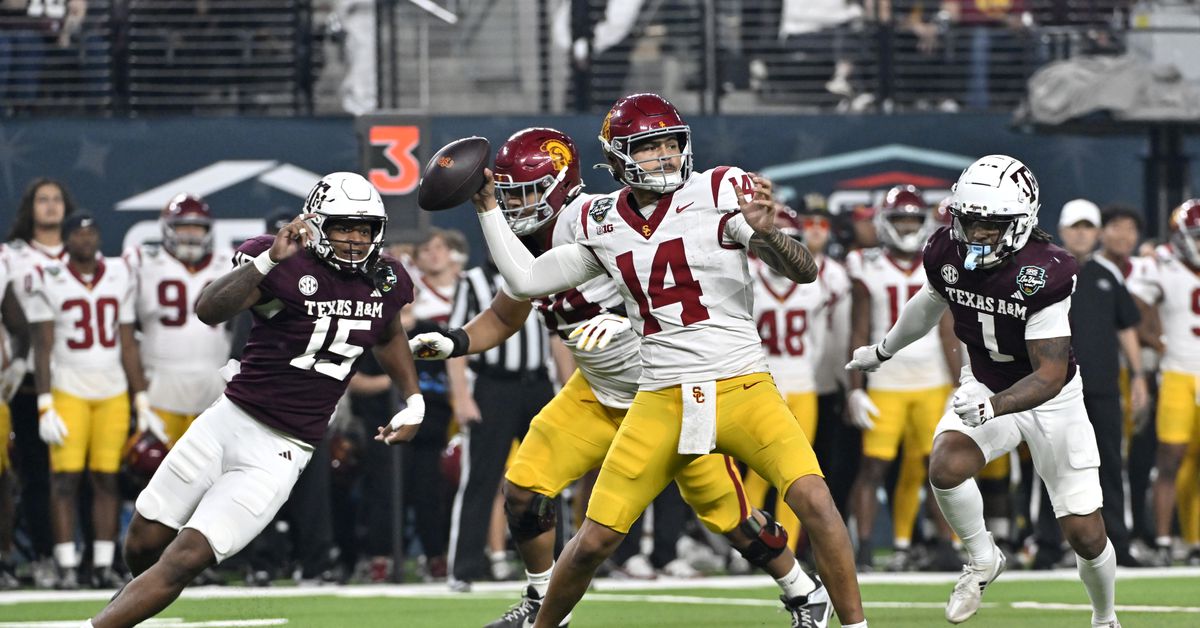


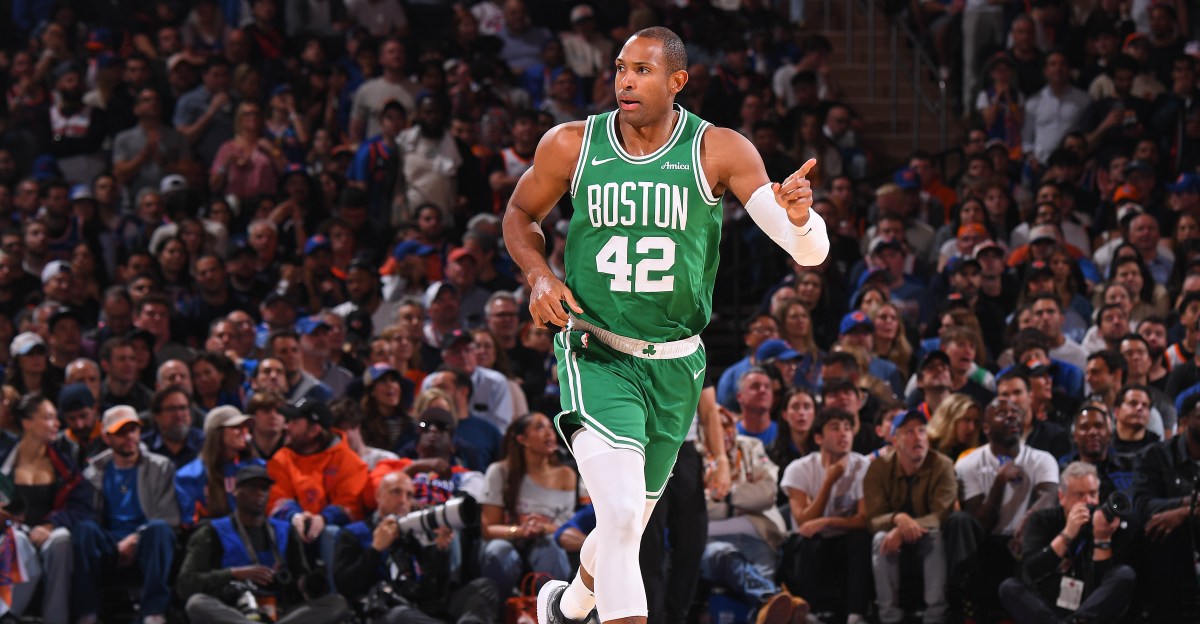


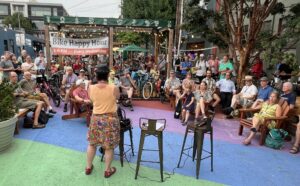


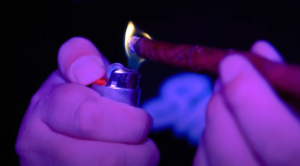



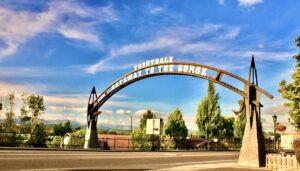
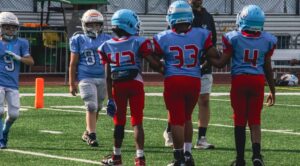
Post Comment